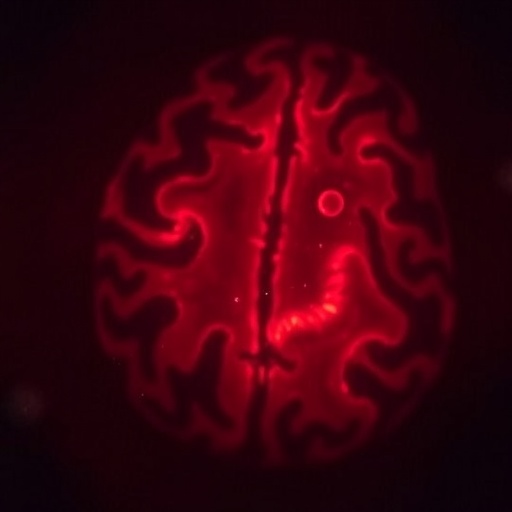In an illuminating breakthrough that could redefine the future of psychiatric diagnostics, researchers have spotlighted electroretinography (ERG) as a potent biomarker for detecting seasonal vulnerability in depression. This study, spearheaded by Maruani, Vissouze, Rach, and colleagues, published in Translational Psychiatry in 2025, delves into the intricate relationship between retinal electrophysiology and affective disorders, providing novel insight into the biological substrates underlying seasonal affective disorder (SAD).
Seasonal depression, a subtype of major depressive disorder characterized by recurrent episodes aligned with specific seasonal shifts, notably winter, has long posed diagnostic and therapeutic challenges. Its correlation to diminished natural light exposure suggests profound links between environmental cues and neurobiological rhythms. The retina, serving as the eye’s sophisticated light-sensing organ, stands at the crossroads of these environmental signals and neuronal activity, making it a logical candidate for biomarker exploration.
Electroretinography, a non-invasive ophthalmic technique measuring electrical responses generated by retinal cells when exposed to light stimuli, captures dynamic retinal functionality with exceptional temporal precision. Historically confined to ophthalmology for diagnosing retinal diseases, ERG has now been repurposed by the research team to probe neuropsychiatric dimensions, thereby bridging two traditionally distinct disciplines.
The study meticulously recruited individuals clinically diagnosed with seasonal depression alongside matched healthy controls. Across multiple seasons, participants underwent comprehensive ERG assessments that quantified responses from distinct retinal layers, particularly focusing on photoreceptors and inner retinal neurons implicated in circadian photoentrainment and mood regulation. Parallel clinical evaluations assessed mood fluctuations, cognitive changes, and circadian rhythm integrity.
Remarkably, the researchers discovered consistent ERG anomalies in the depressed cohort specifically during seasons associated with depressive episodes. These aberrations included altered amplitudes and delayed latencies in both scotopic (rod-mediated, low-light) and photopic (cone-mediated, daylight) responses. Such electrophysiological signatures reveal impaired retinal adaptation mechanisms, potentially reflecting disrupted input to central circadian and mood centers like the suprachiasmatic nucleus and limbic system.
One critical aspect elucidated by the authors is the mechanistic link between retinal dysfunction and serotonergic pathways. Considering serotonin’s key role in mood stabilization and its retinal expression, the observed ERG changes might mirror systemic neurotransmitter imbalances characteristic of depression. This intersection of retinal electrophysiology with neurochemical dysregulation underscores ERG’s promise as a translatable biomarker.
Beyond diagnostic implications, the study suggests ERG could serve as an objective tool for monitoring therapeutic efficacy in SAD. Traditional mood assessments rely heavily on subjective self-reporting, vulnerable to bias and fluctuating insight. ERG’s quantifiable and reproducible metrics offer a much-needed physiological endpoint, potentially guiding individualized treatment adjustments, including phototherapy and pharmacological interventions.
Importantly, the research also propels the broader concept of retinal assessments into psychiatric practice. The retina’s accessibility and shared neurodevelopmental origins with central nervous tissue position it uniquely for revealing central nervous system pathologies through peripheral windows. This approach could catalyze a paradigm shift, promoting earlier, more precise identification of mood disorders through ophthalmic technologies.
The study addresses several technical challenges inherent to cross-disciplinary measurement. ERG protocols were optimized to minimize variability from external factors such as ambient lighting, pupil size, and circadian timing during recordings. Advanced analytic techniques parsed subtle waveform changes, enhancing sensitivity in detecting depression-associated retinal signatures.
The findings resonate deeply with emerging neuroscience frameworks emphasizing system-wide connectivity and peripheral biomarkers. By characterizing how peripheral sensory organs contribute to psychiatric states, this research enriches the dialogue on the neurobiological basis of mood disorders, potentially unraveling new therapeutic targets upstream of traditional central nervous system interventions.
Furthermore, this investigation carves a path toward scalable and accessible screening methodologies. Given ERG’s relative affordability and safety, integrating such assessments into routine clinical workflows seems plausible. Community mental health clinics could implement ERG to identify at-risk populations before full-blown depressive episodes manifest, enabling preventive strategies.
However, the authors prudently caution that while ERG abnormalities correlate strongly with seasonal depression vulnerability, they do not alone establish causality. Longitudinal studies and interventional trials will be necessary to confirm whether rectifying retinal dysfunctions alleviates depressive symptoms or reduces episode frequency. Future research may also explore genetic and molecular correlates contributing to individual variability in retinal responsiveness.
In conclusion, this pioneering study by Maruani and colleagues spotlights electroretinography as a transformative biomarker for seasonal vulnerability in depression, promising to enhance diagnostic accuracy, elucidate pathophysiology, and refine treatment approaches. The convergence of retinal electrophysiology and psychiatry heralds a new frontier that may demystify the seasonal rhythms of depression and foster hope for millions grappling with this cyclic affliction.
Subject of Research: Investigation of electroretinography (ERG) as a biomarker to detect seasonal vulnerability in depression, specifically seasonal affective disorder (SAD).
Article Title: A study on electroretinography as a biomarker for seasonal vulnerability in depression.
Article References:
Maruani, J., Vissouze, L., Rach, H. et al. A study on electroretinography as a biomarker for seasonal vulnerability in depression.
Transl Psychiatry (2025). https://doi.org/10.1038/s41398-025-03737-1
Image Credits: AI Generated




